Heraldry of the Samurai.
2018/11/26 Update dateWandering Japan, you will inevitably notice here and there numerous beautiful circular designs ornamenting storefronts, curtains, objects, gates, etc. They are birds, insects, flowers or geometric patterns. Those designs are known in Japan as kamon, and are in fact the ancient coat of arms of the samurai.
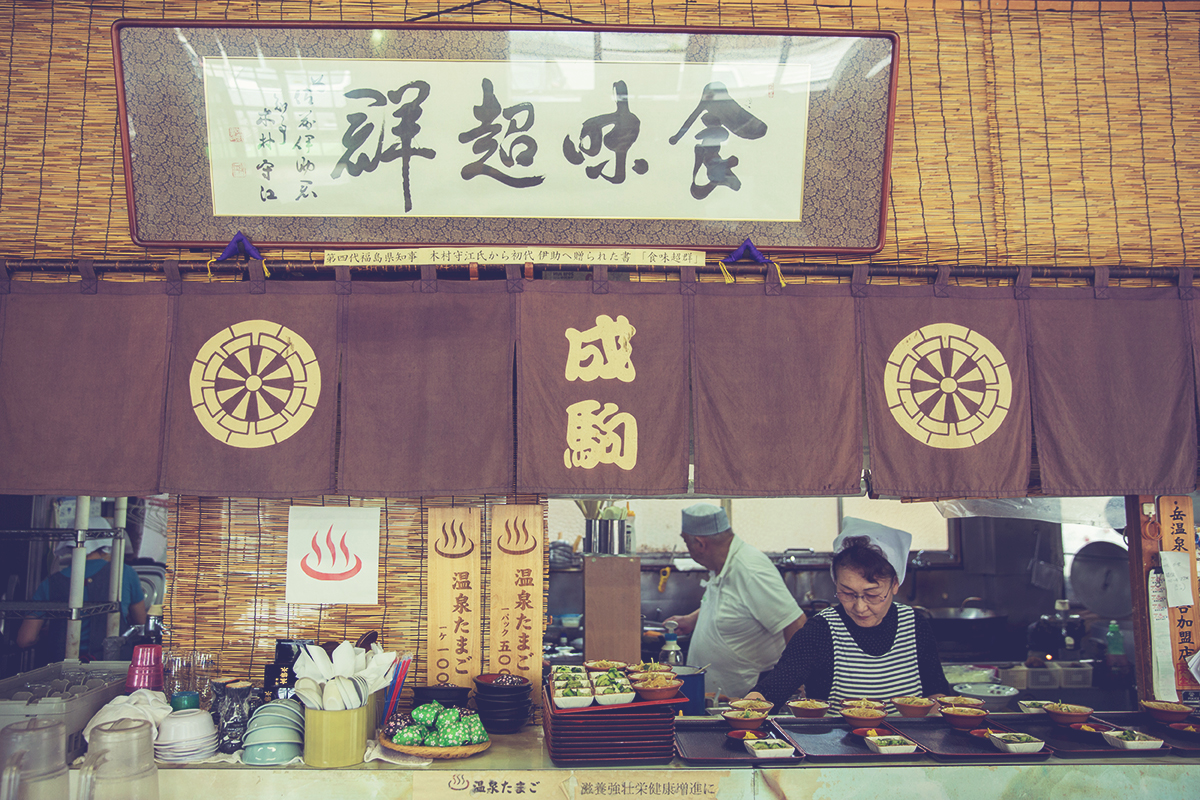
The origins of Japanese heraldry are still debated, but the consensus is that it developed around the end of the first millennium, when Japan was still heavily influenced by Chinese culture, fashion and philosophy. Around the 8th century, several designs from the mainland became en vogue at the imperial court in Kyoto. Those designs represented mythical flowers, birds, lions, vine and grape, chrysanthemum or paulownia, and they soon decorated the Japanese nobility's kimonos in a tasteful variety of colours. Some noblemen started to fancy a few particular designs and adorned them not only onto their garments but also on objects or constructions, such as oxcarts. It is believed that because those marks were also painted of the hubs of the cart's wheels, it became customary to design them in a circular fashion (others claim that the round shape of kamon has buddhist origins... Let's not enter the debate here) . When the samurai, who originally had ties with the imperial family and the nobility, emerged as a caste and eventually rose to power at the end of the 12th century, they naturally adopted their own favoured designs as heraldic insignias. From the 13th century onward, kamon slowly diversified as clans rose or fell, split or consolidated.
Several feudal domains make up what is now known as Fukushima prefecture. The Aizu, the Nihonmatsu, the Shirakawa, the Souma Nakamura or the Fukushima domains were rather strong and were ruled by powerful daimyo (warlords). The Aizu domain, especially, with its magnificent castle called Tsuruga-jo (the Crane Fortress) was the seat of many famous warlords in Japan's history. Their kamon can still be seen nowadays around the castle. They were: Tsuruga-jo
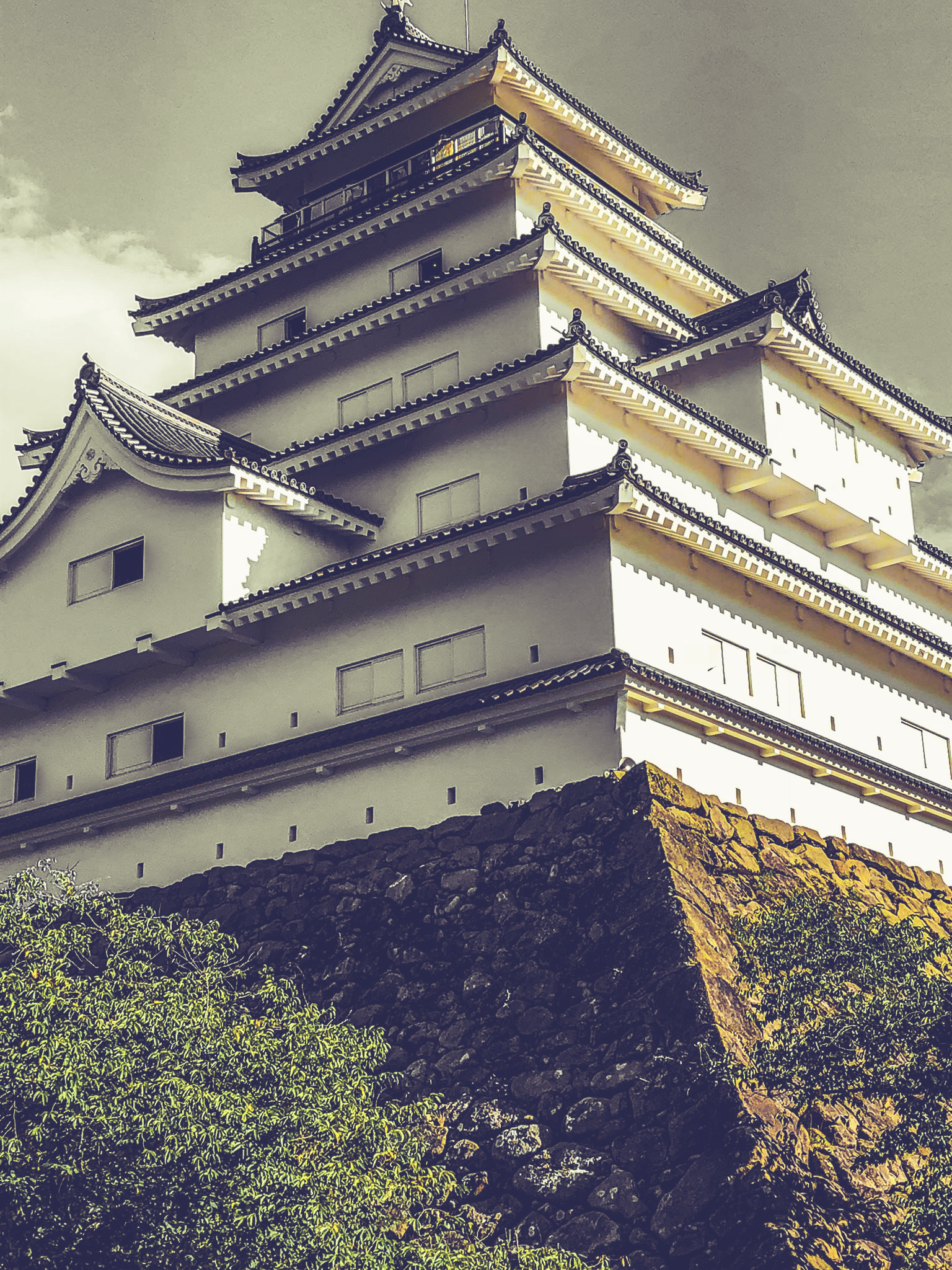
Date Masamune (1567-1636); his kamon representing 2 confronting sparrows in a bamboo ring.
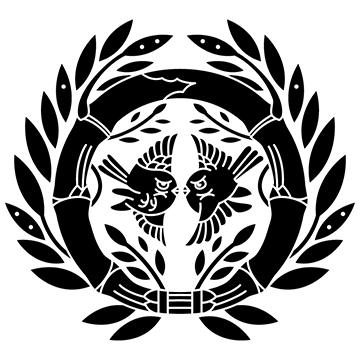
Gamo Ujisato (1556-1595); his kamon representing 3 “right-oriented” jewels.
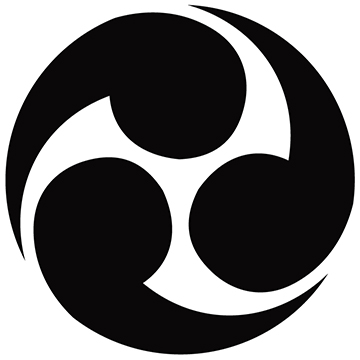
Uesugi Kagekatsu (1556-1623); his kamon representing 2 confronting sparrows and 9 bamboo leaves in a circle.
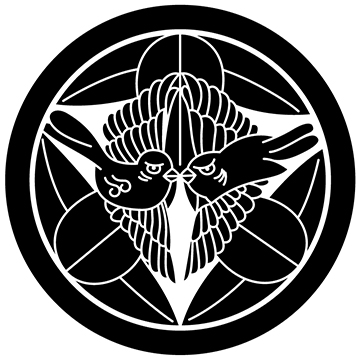
However, the clan that held the Tsuruga-jo fortress the longest was the Matsudaira. They ruled over the Aizu domain from 1681 to 1868. Their kamon became to be known as the “Aizu Aoi”, representing 3 wild ginger leaves in a circle. The Aoi emblem is in fact the most prestigious samurai heraldry, since it is the kamon of the Tokugawa shoguns and the Tokugawa family branches. The founder of the Aizu Matsudaira clan was the grandson of Tokugawa Ieyasu, who established the Tokugawa shogunate. The Matsudaira were thus authorized to bear a modified version of the Tokugawa Aoi kamon.
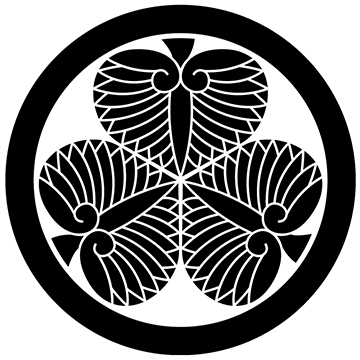 Aizu Aoi
Aizu Aoi
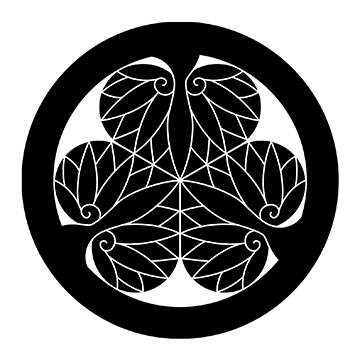 Tokugawa Aoi
Tokugawa Aoi
Of course, each daimyo and each samurai family had their own kamon. Nowadays, most of the castles that once stood in the Fukushima area have been razed, but apart from the Tsuruga-jo in Aizu-wakamatsu, you can still visit the Shirakawa-jo, the ancient fortress of the Abe clan, and the ruins of the Kasumiga-jo in Nihonmatsu, ruled by the Niwa lords throughout the Edo period. The kamon of the Niwa clan really strikes out and is easily identifiable, as it is a single 'X' mark. Overly simple and negating the usual circular trend, this kamon, called Niwa Sujikai-mon, is a bold statement of the Niwa former lords' sharp personality.

Two tales relate the origin of this kamon:
An ancestor of the family went out to battle, wearing his armour ornamented with a peculiar sashimono. A sashimono was a long rectangular flag secured at the back of the warrior's cuirass, and on which the kamon of the bearer was usually painted. Niwa's sashimono, however, only featured eight metallic strips hanging from the top rod. After the battle, six of those strips were missing. Only two remained but had been somehow bent in the turmoil of the fight, now crossing each-other like an 'X'. It is said that Niwa saw in this a sign of good omen and subsequently adopted that cross mark as his family emblem.
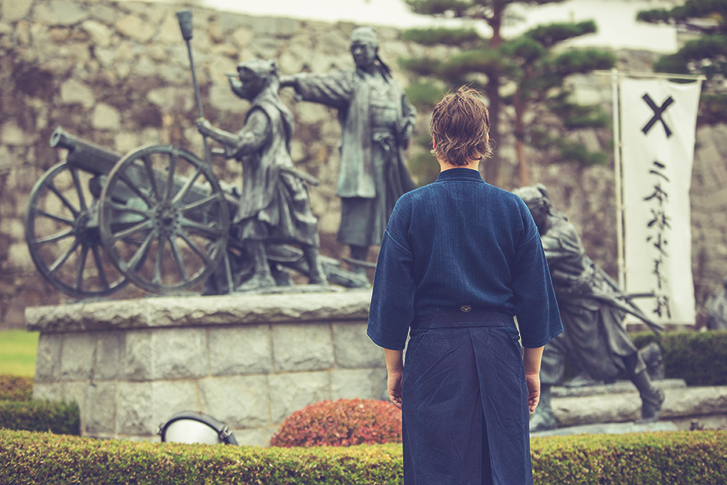
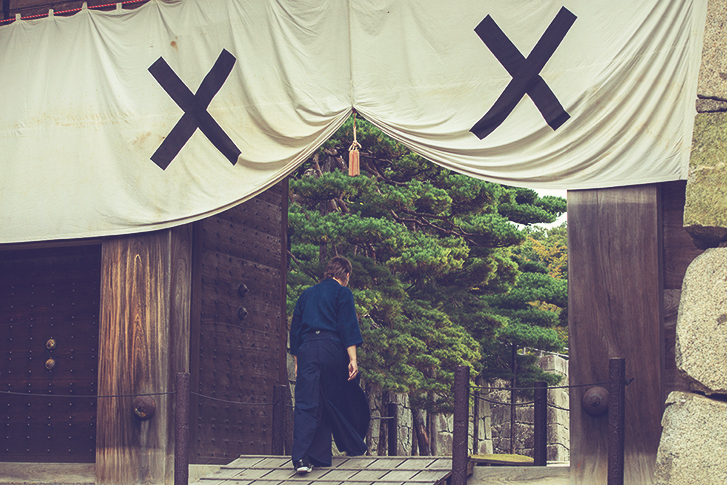
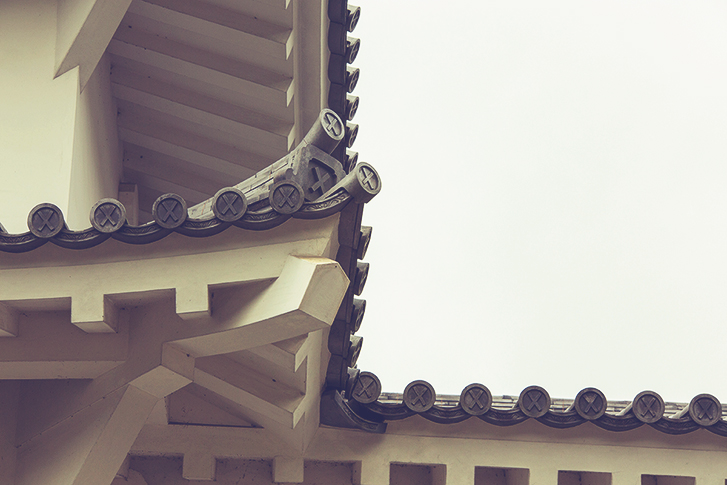 The Niwa Sujikai-mon can be found in many places around the Kasumiga-jo castle.
The Niwa Sujikai-mon can be found in many places around the Kasumiga-jo castle.
Another version however, has it that Niwa had killed many of his enemies during that battle. He had to wipe his sword off of their blood upon his trousers several times throughout the day and the stains eventually left two red broad lines in the shape of an 'X' on the fabric. Niwa saw in this mark a talisman for victory and stylized it as his kamon.
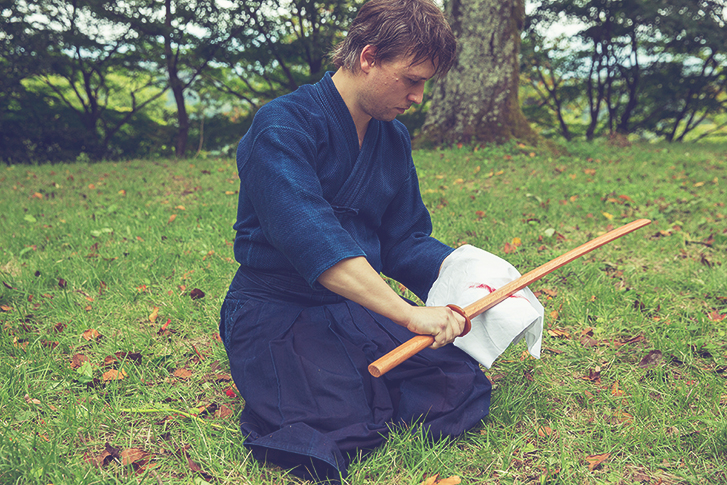
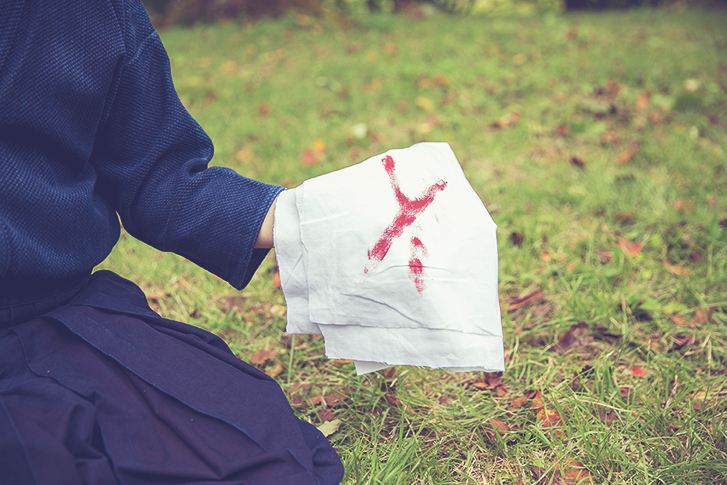 Replicating the tale with a wooden sword and (fake) blood.
Replicating the tale with a wooden sword and (fake) blood.
When you visit the Kasumiga-jo, look around for those 'X', they are everywhere! You will find them also in temples and shrines in the vicinity. From the Kasumiga-jo, a short ride can take you to the Dairin-ji temple, where the souls of the Nihonmatsu Shonentai are enshrined. They were samurai boys, aged 12 and above, who fought to the death to defend the castle at the end of the Boshin war. Deeper in the forest, behind the temple, you will find the mausoleum of the Niwa lords. In a solemn yet nostalgic glade, unaffected by the passing of time, they rest under ancient stones all adorned with carmine 'X' marks.
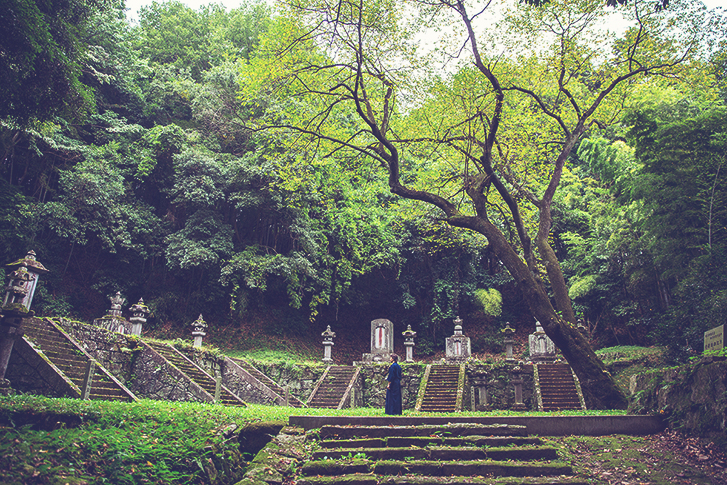
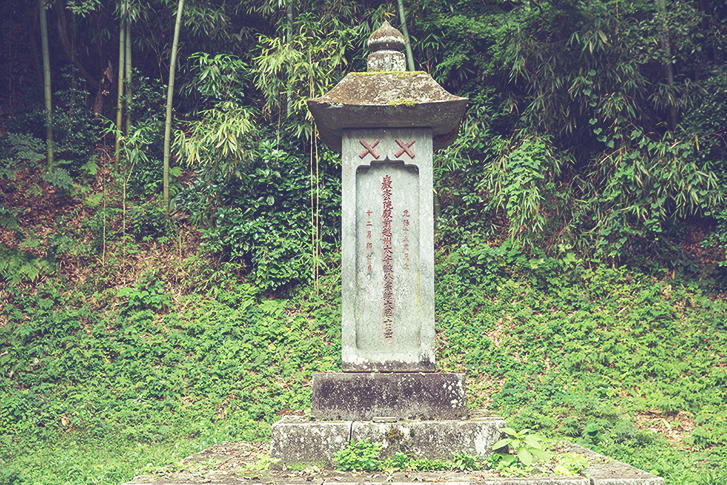
Tourists will most likely encounter many kamon all around the Fukushima prefecture, on castle's tiles, on shrines or temples, in graveyards... but also on posters, on souvenirs, on t-shirts, etc. Kamon, which used to be revered symbols of power, have now merely become fancy designs used in a variety of situations or products, for advertisement or decoration. Yet, there are some people who still remember their meaning and continue to preserve this unique aspect of samurai culture.







